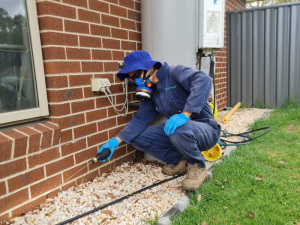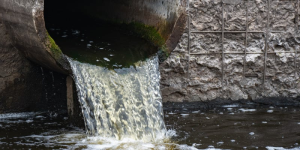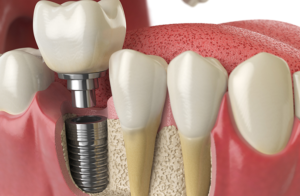
Failing to properly clean, sand and prime cabinet surfaces before painting can lead to poor adhesion and a less than durable finish. Thoroughly wash the surface with a mild detergent or degreaser such as trisodium phosphate (TSP) and then rinse thoroughly.
Skip this step and your cabinets will be home to peeling paint, mildew, mystery gunk and other unsightly marks. For more information, check out San Jose Cabinet Refinishing.
Poor Preparation
Cabinet painting is a rewarding DIY project that refreshes the look of your cabinets. However, if you aren’t careful, it can turn into a costly disaster. There are a number of common mistakes that can detract from your final result, including poor preparation, skipping the sanding process, and using inferior wall paint.
During the prep process, it is important to thoroughly clean and sand your cabinet surfaces before applying new coats of paint or stain. Failure to do so can result in the new finish not adhering properly, which can lead to peeling over time.
When sanding, use a fine-grit sandpaper to create a smooth surface. This will prepare the surface for new paint or stain, ensuring that it grips firmly to the cabinet material and helps reduce the likelihood of chipping or peeling in the future.
Additionally, it is crucial to use the right primer for your cabinet materials and conditions. Some types of primer may be too thick or cause a chemical reaction that can damage your cabinets. Finally, be sure to allow the topcoats of your refinishing project to dry completely before touching them. Rushing the drying process can lead to tacky paint and smudges.
Failing to Sand
One of the most common mistakes people make when refinishing cabinets is failing to sand properly. This step is essential to ensure a good bond between the new paint and the cabinet surface, as well as to remove any grease or grime that might have accumulated over time. Skipping this step can lead to a sticky, caked-on finish that looks unattractive and isn’t very durable.
Another common mistake is choosing the wrong type of paint. It’s important to use a product that is designed specifically for cabinetry, as it will provide better coverage and durability. Additionally, it’s important to choose a finish that suits your desired style. For example, matte finishes are great for a modern look, while satin or semi-gloss is ideal for traditional and classic styles.
Lastly, it’s important to apply the paint evenly and allow sufficient time for drying between coats. Using the right tools also makes a difference. Investing in high-quality brushes and rollers can help you achieve a smooth, even finish. For example, foam rollers are great for flat surfaces, while angled brushes can be used to detail edges and corners.
Cabinet refinishing is a project that requires attention to detail and patience. Avoiding these common mistakes can save you time and money, as well as give your kitchen a professional-looking finish that will last for years to come.
Skipping the Primer
It’s easy to overlook the importance of a good primer when refinishing cabinets. However, skipping this step can result in paint adhesion issues and an overall poor-quality finish.
The key is to properly clean the surface of the cabinet and sand it before applying a primer. This is especially important if you’re changing the color of your cabinets.
You must also choose the right paint for your cabinets. Cabinets are not like walls and must be able to withstand grease splatter, cleaning products, and moisture. Latex wall paint won’t hold up on your cabinets, so invest in a high-quality enamel or urethane paint.
Aside from choosing the right type of paint, you must also choose a suitable finishing coat. A clear polyurethane will protect your finished job and make it easier to wipe clean.
It’s also important to take the time to apply each coat of paint evenly, as well as to allow ample drying time between applications. Rushing your painting project will cause drips, uneven surfaces, and unsightly blemishes. The best way to avoid this is by investing in quality application tools (such as a foam roller or angled brush) and taking the time to properly prepare the surface before each coat of paint. Additionally, it’s crucial to work in a well-ventilated area to protect yourself from harmful fumes.
Using the Wrong Products
Cabinet refinishing requires high-quality products to achieve the desired results. Cutting corners by using cheap products can cost you in the long run. Using the wrong paints or varnishes can result in bubbling, peeling, and inconsistent color. Your contractor should always use the right product for your project, and test it on a small area of your cabinets before starting your job.
Another mistake homeowners make is applying too much stain or paint. Applying thin coats yields far better results than attempting to cover everything in one thick layer. Thin coats also dry more quickly than gloopy blobs of stain or paint.
Failing to sand before painting can also lead to uneven surfaces and poor adhesion. A thorough sanding with 180-grit sandpaper or a random orbital sander is essential to roughen up the surface and create a key surface for primer and paint to adhere properly. After sanding, a vac and tack cloth are used to remove dust particles from the work area and ensure that no dust is left behind to interfere with the finish.
Insufficient drying time can also ruin your finish. It is important to follow the manufacturer’s recommended drying times between each coat of stain or paint. Patience is required for this step, and the payoff is a beautiful, professional-looking cabinet finish. The temperature of the environment can also play a role in how well your cabinets dry and cure. If the weather is hot or humid, it can affect the speed at which your finishes dry and cause problems like bubbles or peeling. Your contractor should know this and monitor the weather to work in optimal conditions.
Poor Application Techniques
Cabinet refinishing is a detailed process, and poor application can ruin the appearance of your results. This includes applying too many coats, leaving drips or streaks, and using improper tools. Ensure you’re using a high-quality brush or sprayer and that the applicator is designed for your cabinet paint. This will help you achieve even coverage, resulting in a professional-grade finish.
Whether you’re painting cabinets or changing their color, it’s essential to use a stain-blocking bonding primer. This will prevent bleed-through from dark wood or a drastic color change and ensure the topcoat adheres properly to the surface. It’s also necessary to seal the cabinets with a high-quality polyurethane, which helps protect the finish and adds durability.
Failing to remove hardware like hinges, handles, and knobs is another common mistake that can lead to a lack of consistency in your new painted finish. This is why refinishing professionals take the time to thoroughly clean and mask off their work before painting.
Preparation is one of the most important steps in any refinishing project, but it’s often rushed or overlooked. Thoroughly cleaning the surfaces and degreasing with a product like TSP (trisodium phosphate) is crucial, as well as sanding to create a proper profile for coatings to adhere. It’s also imperative to allow sufficient dry times between coats, which will help to avoid bubbles or cracking over time. The temperature and humidity of your work space also play an important role in achieving optimal results.
Poor Environment
A poor environment can negatively impact a cabinet refinishing job in several ways. The first is that it creates dust and dirt particles that can damage the finished surface. It also contributes to breathing problems, especially when combined with sanding. Finally, it may also cause chemical reactions that yield unsatisfactory results such as bubbling or peeling.
To avoid these problems, it’s essential to prepare the workspace thoroughly. This means emptying the cabinets and removing all knobs, handles, and pulls before starting work. Next, clean the surfaces with a degreaser like TSP (trisodium phosphate) or a mild detergent to remove grease and grime. Once the surfaces are clean, sand them to create an even texture that will allow coatings to adhere well. Finally, it’s critical to use a good ventilation system to remove all sanding dust and chemicals from the air before continuing.
Choosing the right application tools can make or break a cabinet refinishing project. Using a foam roller for flat surfaces and an angled brush for detail work will help ensure smooth, consistent finishes. It’s also important to be patient when applying coats, as rushing can lead to unsightly streaks and uneven surfaces.
Unlike new cabinet replacement, refinishing typically requires less material and is therefore more environmentally-friendly. The process reduces the need for material extraction, which can lead to habitat destruction and natural resource depletion, and the need for transportation, which contributes to climate change and global warming.








